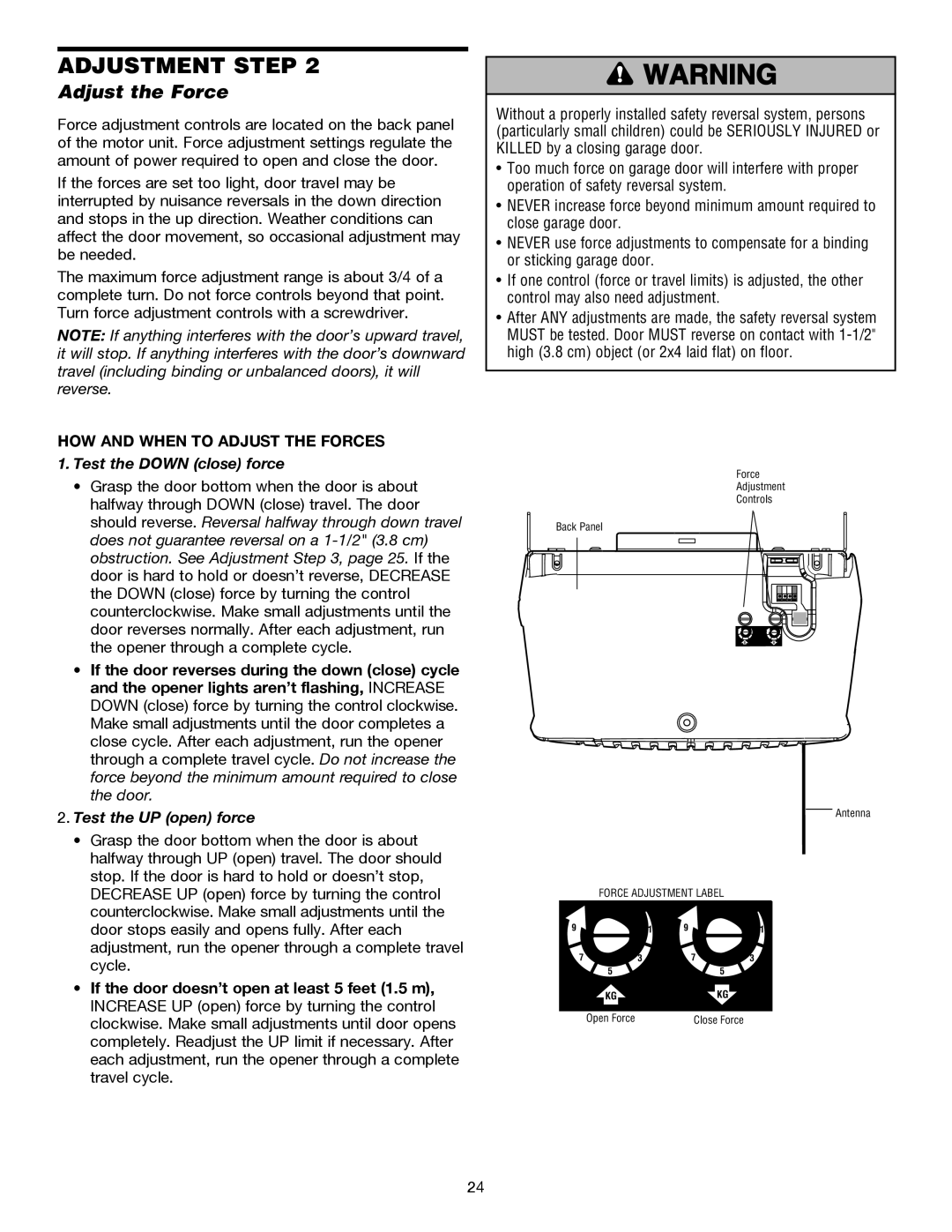3255M 1/2 HP, 3245M 1/3 HP, 3255-2M 1/2 HP specifications
The Chamberlain 3255-2M, 3245M, and 3255M garage door openers stand out in the market for their reliability and superior performance. Each model offers a unique combination of power and features, catering to different needs and preferences.The Chamberlain 3255-2M is a robust 1/2 HP opener designed for heavy residential garage doors. Its powerful motor ensures smooth and efficient operation, making it ideal for doors weighing up to 7 feet high. This model incorporates the latest in opening technology, including a durable chain drive mechanism that provides strength and longevity. One of its significant features is the incorporated MyQ technology, enabling users to control their garage door remotely through a smartphone app. This innovative feature brings convenience and peace of mind, as homeowners can check the status of the door from anywhere.
Another excellent choice is the Chamberlain 3245M, a 1/3 HP model that offers a balance of performance and affordability. It is suitable for lighter doors, providing consistent and reliable opening and closing. The 3245M model also boasts a protective cover that enhances its durability against the elements. It operates quietly thanks to its direct drive system, making it an excellent option for garages attached to living spaces. Like the 3255-2M, this model is also equipped with MyQ technology, allowing users to monitor and control their garage door from their smartphones seamlessly.
Finally, the Chamberlain 3255M, another 1/2 HP opener, offers similar features to the 3255-2M but with a focus on belt drive technology. This model is built for quieter performance, making it ideal for homes where noise is a concern. The belt drive reduces vibrations and sound, ensuring a smoother user experience. This model also comes with a battery backup system, which provides added security during power outages.
All these models emphasize safety and security, featuring auto-reverse functionality that senses obstacles and prevents the door from closing on them. The Chamberlain garage door openers are also equipped with a rolling code technology that changes the access code each time the remote is used, enhancing security against unauthorized access.
In summary, the Chamberlain 3255-2M, 3245M, and 3255M garage door openers cater to a variety of needs with their powerful motors, innovative technologies, and user-friendly features. Their reliability and performance make them an excellent investment for any homeowner.

